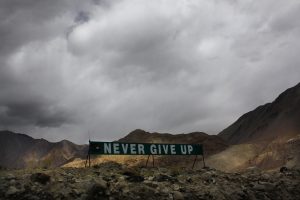In the eastern Indian state of Arunachal Pradesh abutting China lies a Tibetan Buddhist monastery in Tawang. Galden Namgey Lhatse, as the monastery is called, is the second biggest in the world after the Potala Palace in Lhasa, the Tibetan capital. The 341-year-old shrine was built in accordance with the wishes of the 5th Dalai Lama, Nagwang Lobsang Gyatso, who ruled over Tawang from Lhasa. The sixth Dalai Lama was born in Tawang. Texts at the monastery say 14-year-old Tsangyang Gyatso was identified as a reincarnation of the fifth Dalai Lama and taken to Lhasa from Urgelling in 1697. According to records at the monastery, most of the food consumed in Tibet was grown in Tawang and the region accounted for a third of Tibetan economy.
Even though the British claimed Tawang as per the 1914 Simla accord, they never ruled Tawang. India gained independence in 1947 but took control of Tawang only in 1951, when it pushed Tibetan officials out of the area. Even though Chinese control of Tibet was still a few years away, Chinese scholars blame India’s cunning in taking advantage of Beijing’s military commitment in the Korean War at the time. Not that other parts of the disputed India-China boundary are easy to resolve, but for New Delhi, Beijing’s claim to Tawang remains one of the biggest hurdles in reaching a boundary settlement.
An agreement signed by the two countries in 2005 stated that “in reaching a boundary settlement, the two sides shall safeguard due interests of their settled population in the border areas.” This would imply that Tawang would come to India, but China insists that it is an inalienable part of Tibet. Dai Bingguo, who served as Beijing’s Special Representative for border talks with India between 2003 and 2013, wrote in an article in 2017 that “the major reason the boundary question persists is that China’s reasonable requests [in the east] have not been met.”
The Chinese line has hardened, and its state media now talks of “Zangnan” – literally meaning “southern Tibet” – best defined as all of Arunachal. Beijing went further and last year renamed 15 places in Zangnan by giving them “standardized” names.
The Tawang issue highlights a critical factor in China’s turbulent relationship with India: Tibet. The Dalai Lama continues to be hosted by India as he has been since 1959, and the 2008 disturbance in Tibet demonstrated to a stunned Beijing that the control it exercises over the region is not yet absolute. Unlike most other boundary disputes that Beijing has since resolved, China’s India policy and its view of the border dispute are intricately linked to its domestic goals in Tibet. As Ananth Krishnan showed in his book “India’s China Challenge,” documents released to the public by China in 2012 (and quickly re-sealed) support the conclusion that the Sino-India border war of 1962 was driven by Chinese interests and insecurities about Tibet.

































